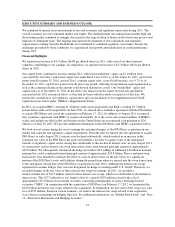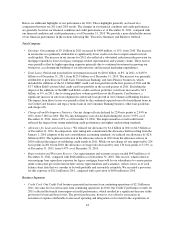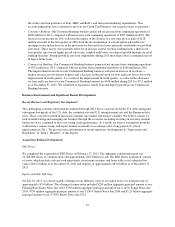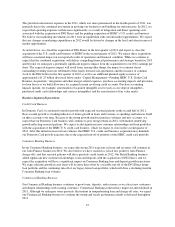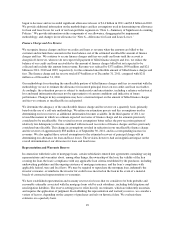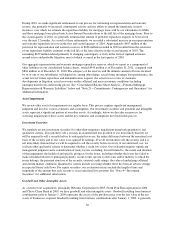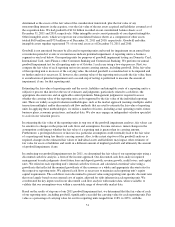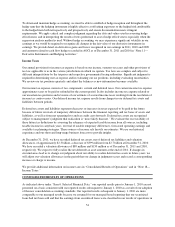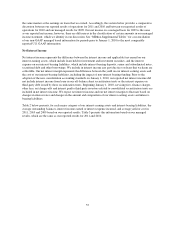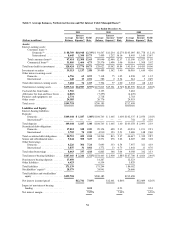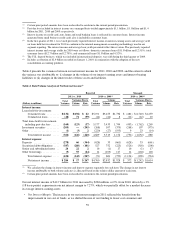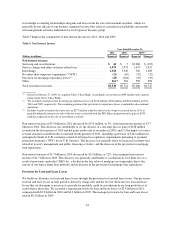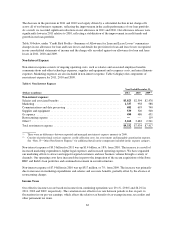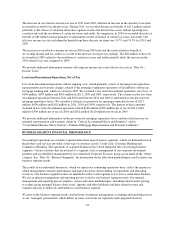Capital One 2011 Annual Report Download - page 73
Download and view the complete annual report
Please find page 73 of the 2011 Capital One annual report below. You can navigate through the pages in the report by either clicking on the pages listed below, or by using the keyword search tool below to find specific information within the annual report.Significant judgment may be required to determine whether certain financial instruments measured at fair value
are included in Level 2 or Level 3. In making this determination, we consider all available information that
market participants use to measure the fair value of the financial instrument, including observable market data,
indications of market liquidity and orderliness, and our understanding of the valuation techniques and significant
inputs used. Based upon the specific facts and circumstances of each instrument or instrument category,
judgments are made regarding the significance of the Level 3 inputs to the instruments’ fair value measurement
in its entirety. If Level 3 inputs are considered significant, the instrument is classified as Level 3. The process for
determining fair value using unobservable inputs is generally more subjective and involves a high degree of
management judgment and assumptions.
Our financial instruments recorded at fair value on a recurring basis represented approximately 20% of our total
reported assets of $206.0 billion as of December 31, 2011, compared with 22% of our total reported assets of
$197.5 billion as of December 31, 2010. Financial assets for which the fair value was determined using
significant Level 3 inputs represented approximately 2% of these financial instruments (less than 1% of total
assets) as of December 31, 2011 and 2010.
We discuss changes in the valuation inputs and assumptions used in determining the fair value of our financial
instruments, including the extent to which we have relied on significant unobservable inputs to estimate fair
value and our process for corroborating these inputs, in “Note 19—Fair Value of Financial Instruments.”
Key Controls Over Fair Value Measurement
We have a governance framework and a number of key controls that are intended to ensure that our fair value
measurements are appropriate and reliable. Our governance framework provides for independent oversight and
segregation of duties. Our control processes include review and approval of new transaction types, price
verification and review of valuation judgments, methods, models, process controls and results.
Groups independent from our trading and investing functions, including our Valuations Group and Valuations
Advisory Committee, participate in the review and validation process. The Valuation Advisory Committee
includes senior representation from business areas, our Enterprise Risk Oversight division and our Finance
division.
Our Valuations Group performs monthly independent verification of fair value measurements by comparing the
methodology driven price to other market source data (to the extent available), and uses independent analytics to
determine if assigned fair values are reasonable. For example, in cases where we rely on third party pricing
services to obtain fair value measures, we analyze pricing variances among different pricing sources and validate
the pricing used by comparing the information to additional sources, including dealer pricing indications in
transaction results and other internal sources. The Valuations Advisory Committee regularly reviews and
approves our valuation methodologies to ensure that our methodologies and practices are consistent with industry
standards and adhere to regulatory and accounting guidance.
Derivative Instruments and Hedging Activities
We primarily use derivative instruments to manage our exposure to interest rate risk, and to a lesser extent,
foreign currency risk. Our derivatives are designated as either qualifying accounting hedges or free-standing
derivatives. Free-standing derivatives consist of customer-accommodation derivatives and economic hedges that
we enter into for risk management purposes that are not linked to specific assets or liabilities or to forecasted
transactions and, therefore, do not qualify for hedge accounting. Qualifying accounting hedges are designated as
fair value hedges, cash flow hedges or net investment hedges. Although all derivative financial instruments,
whether designated for hedge accounting or not, are reported at their fair value on our consolidated balance
sheets, the accounting for changes in the fair value of derivative instruments differs based on whether the
derivative has been designated as a qualifying accounting hedge and the type of accounting hedge.
53


